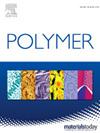Guar gum and carboxymethyl cellulose nanocomposite loaded with piperine: a multipurpose nanoparticle with potential antibacterial and anticancer properties
IF 4.1
2区 化学
Q2 POLYMER SCIENCE
引用次数: 0
Abstract
Guar gum-carboxymethyl cellulose derived piperine nanocomposite (GG-CMC@PIP) was synthesized to develop a phytochemical-based nanomaterial by following a simple synthetic procedure. In this study, piperine, an alkaloid prodrug was nanonized by entrapping within guar gum-carboxymethyl cellulose derived nanocomposite (GG-CMC). GG-CMC@PIPs were of (i) size (25 ± 3) nm by TEM, (ii) zeta potential (−) 33.1 ± .73 mV and (iii) entrapment efficiency 86 ± .46 %. High loading percentage of piperine in polymeric nanocomposites revealed excellent incorporation efficiency. In addition, pH responsive release behaviour of piperine from nanocomposites exhibited sustained but faster release pattern in pH 5.5. Minimal inhibitory concentration (MIC) and minimum bactericidal concentration (MBC) of piperine loaded nanocomposite on Gram positive Enterococcus faecalis and Gram-negative Escherichia coli, Pseudomonas aeruginosa were in the range of 200–400 μg/ml. IC50 value of GG-CMC@PIP was found to be around 500 μg/ml against C6 glioma cell line. Experimental outcome confirmed excessive accumulation of reactive oxygen species (ROS) mediated cytotoxicity, mitochondrial depolarization and higher degree of nuclear damage followed by increased mortality of C6 glioma cell after treatment with piperine-loaded nanocomposite.

含有胡椒碱的瓜尔胶和羧甲基纤维素纳米复合材料:一种具有潜在抗菌和抗癌特性的多用途纳米粒子
瓜尔胶-羧甲基纤维素衍生胡椒碱纳米复合材料(GG-CMC@PIP)通过简单的合成过程被合成,以开发一种基于植物化学的纳米材料。在这项研究中,瓜尔胶-羧甲基纤维素衍生纳米复合材料(GG-CMC)通过夹带生物碱原药胡椒碱实现了纳米化。GG-CMC@PIPs 的(i) TEM 尺寸为 (25 ± 3) nm,(ii) ZETA 电位为 (-) 33.1 ± .73 mV,(iii) 捕获效率为 86 ± .46 %。哌啶在聚合物纳米复合材料中的高负载率显示了极佳的掺入效率。此外,在 pH 值为 5.5 时,纳米复合材料中胡椒碱的 pH 值响应释放表现出持续但较快的释放模式。哌啶负载纳米复合材料对革兰氏阳性粪肠球菌、革兰氏阴性大肠杆菌和铜绿假单胞菌的最小抑菌浓度(MIC)和最小杀菌浓度(MBC)在 200-400 μg/ml 之间。研究发现,GG-CMC@PIP 对 C6 胶质瘤细胞株的 IC50 值约为 500 微克/毫升。实验结果证实,使用哌啶负载纳米复合材料处理 C6 胶质瘤细胞后,活性氧(ROS)介导的细胞毒性、线粒体去极化和核损伤过度累积,死亡率随之升高。
本文章由计算机程序翻译,如有差异,请以英文原文为准。
求助全文
约1分钟内获得全文
求助全文
来源期刊

Polymer
化学-高分子科学
CiteScore
7.90
自引率
8.70%
发文量
959
审稿时长
32 days
期刊介绍:
Polymer is an interdisciplinary journal dedicated to publishing innovative and significant advances in Polymer Physics, Chemistry and Technology. We welcome submissions on polymer hybrids, nanocomposites, characterisation and self-assembly. Polymer also publishes work on the technological application of polymers in energy and optoelectronics.
The main scope is covered but not limited to the following core areas:
Polymer Materials
Nanocomposites and hybrid nanomaterials
Polymer blends, films, fibres, networks and porous materials
Physical Characterization
Characterisation, modelling and simulation* of molecular and materials properties in bulk, solution, and thin films
Polymer Engineering
Advanced multiscale processing methods
Polymer Synthesis, Modification and Self-assembly
Including designer polymer architectures, mechanisms and kinetics, and supramolecular polymerization
Technological Applications
Polymers for energy generation and storage
Polymer membranes for separation technology
Polymers for opto- and microelectronics.
 求助内容:
求助内容: 应助结果提醒方式:
应助结果提醒方式:


